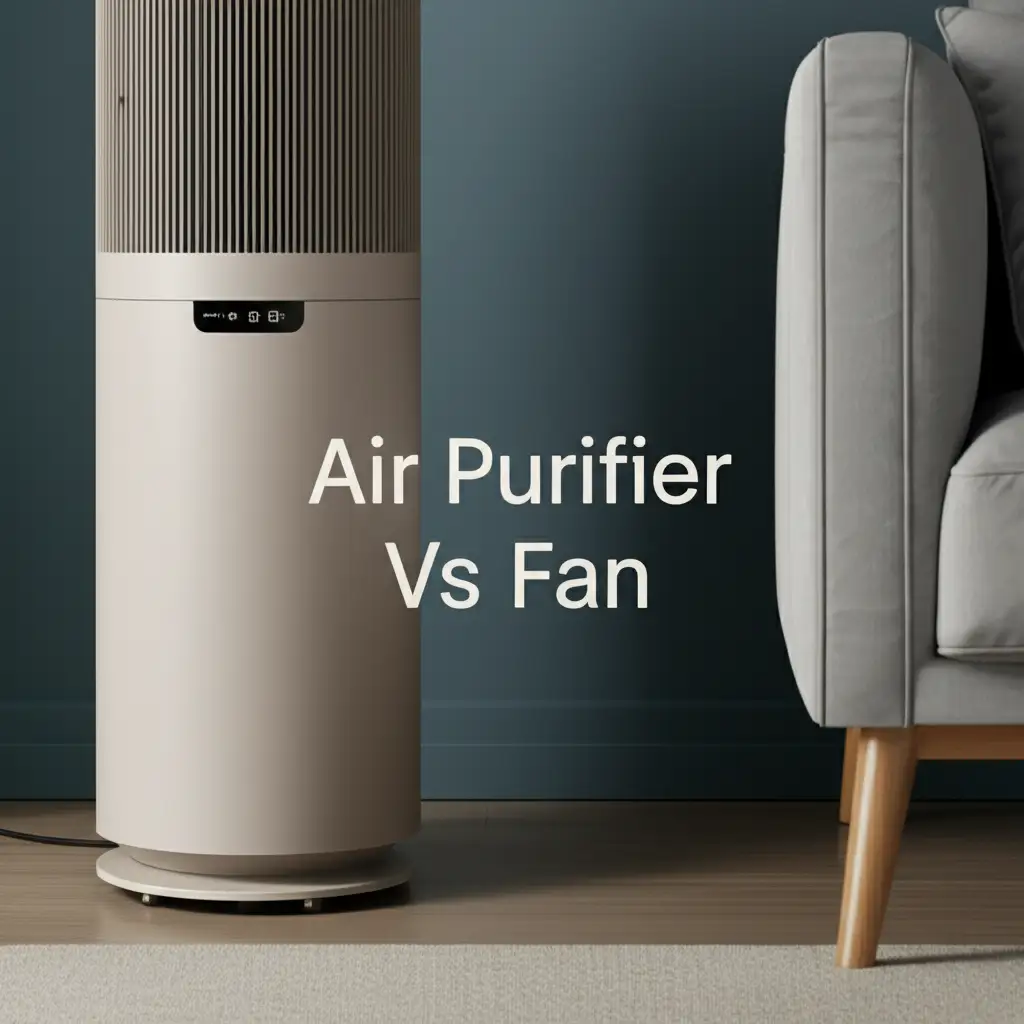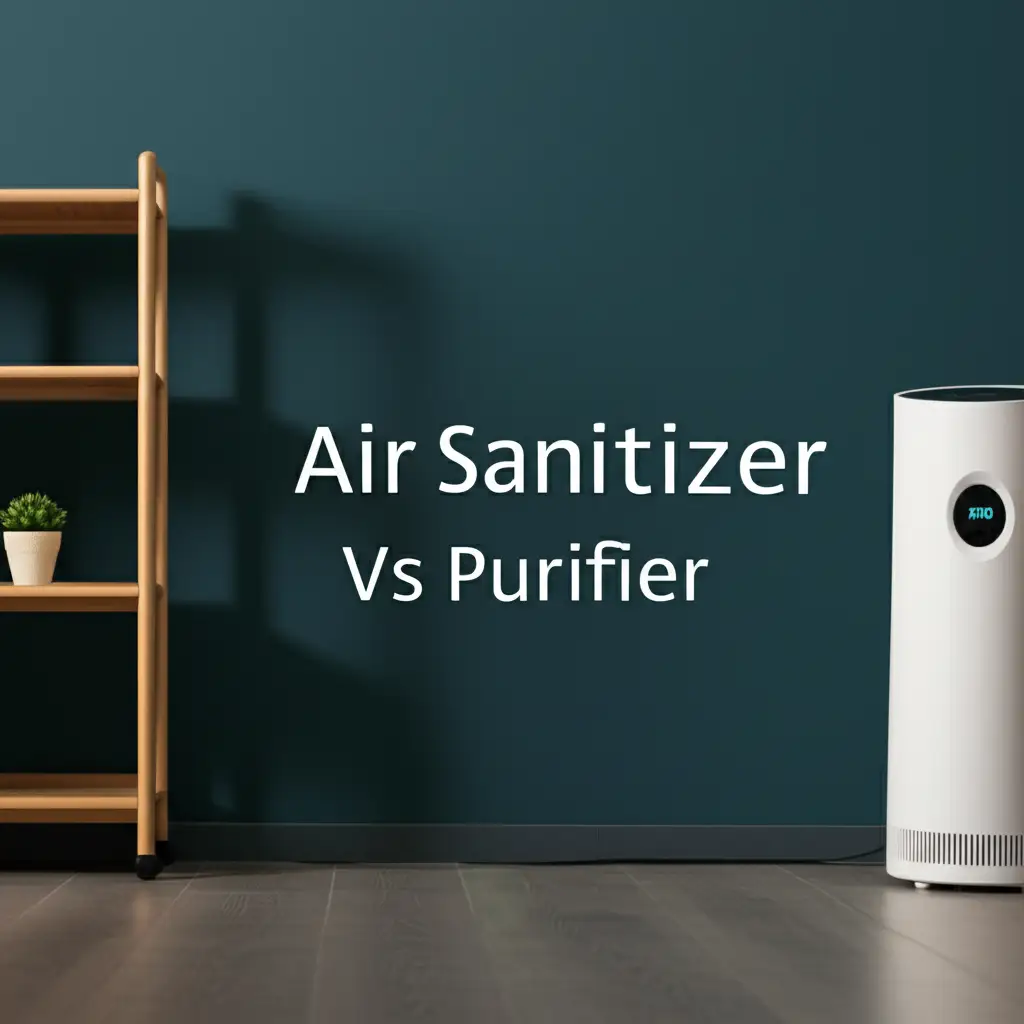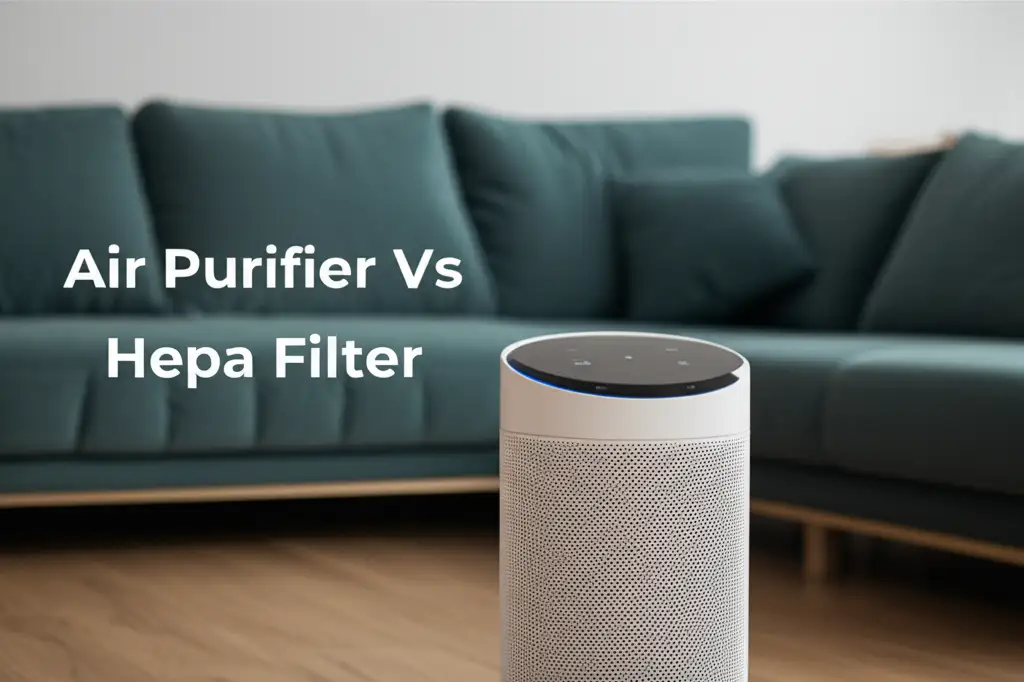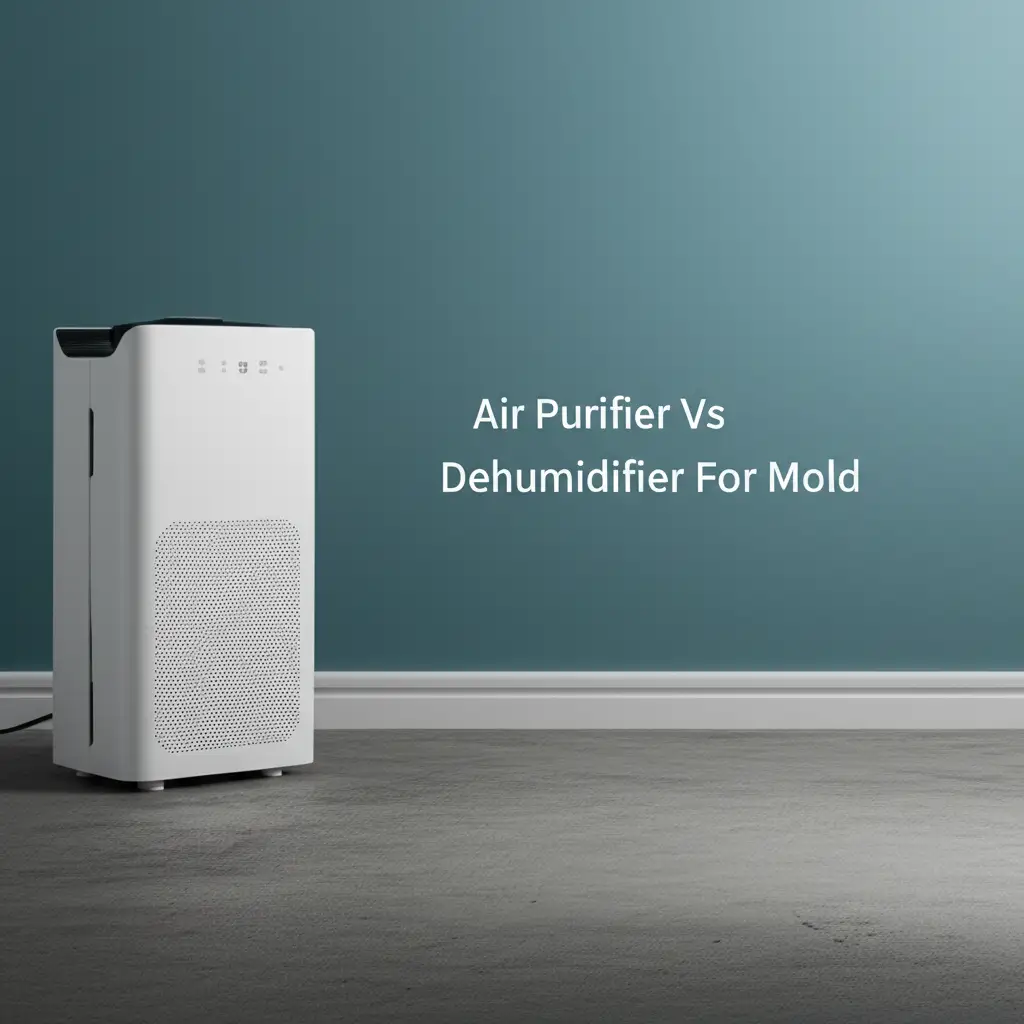· Mason Everett · Baby Health · 16 min read
Air Purifier Vs Humidifier For Baby
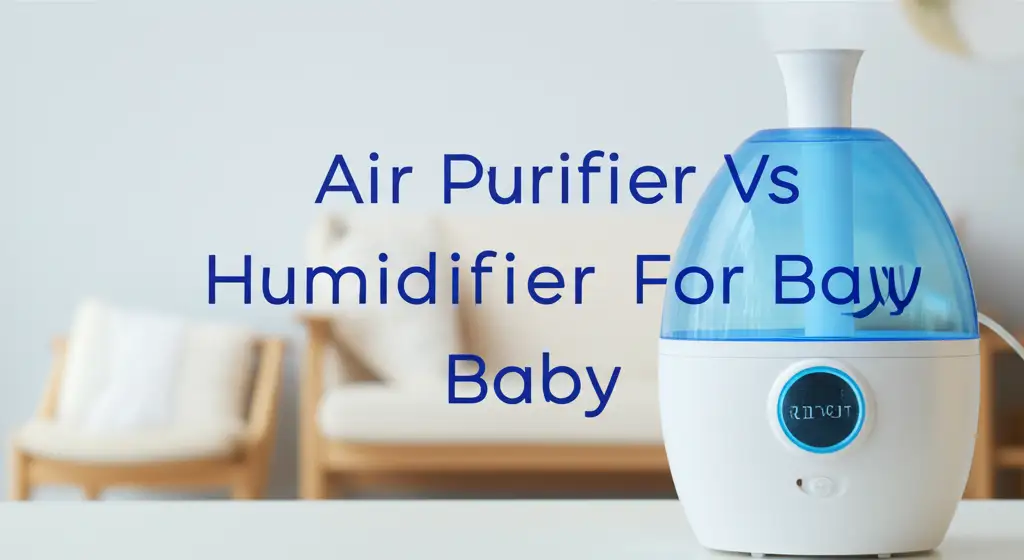
Air Purifier Vs Humidifier For Baby: Which One Does Your Little One Need?
As a parent, your baby’s comfort and well-being are always top of mind. You want to create the safest, healthiest environment possible for your little one. This often includes thinking about the air they breathe in their nursery. Many parents wonder about devices like an air purifier vs humidifier for baby rooms. Do they both serve the same purpose? Is one better than the other?
I remember researching these exact questions when my baby arrived. It felt overwhelming at first, trying to figure out which device offered the right benefits. This article will break down the functions of air purifiers and humidifiers. We will explore their specific benefits for infants. You will learn when one might be more suitable than the other. I will also share important safety and maintenance tips. By the end, you will understand how to choose the best air solution for your baby’s room.
Takeaway:
- Air Purifiers Clean Air: They remove pollutants like allergens, dust, and pet dander.
- Humidifiers Add Moisture: They relieve dry air symptoms like congestion and dry skin.
- Different Functions: These devices solve distinct environmental problems.
- Assess Needs: Determine if your baby has allergy symptoms (purifier) or dry air issues (humidifier).
- Both Can Help: In some cases, using both devices offers comprehensive benefits.
- Prioritize Safety: Regular cleaning and proper placement are vital for both.
When considering an air purifier vs humidifier for baby, remember they serve different purposes. An air purifier removes harmful particles from the air, making it cleaner for breathing. A humidifier adds moisture to dry air, easing symptoms like congestion or dry skin. Your choice depends on specific air quality or dryness concerns in your home.
Understanding Air Purifiers: What They Do for Your Baby
I often think about the invisible elements in our homes. The air we breathe contains many tiny particles. An air purifier actively cleans the air in your baby’s room. It works by drawing in air and passing it through a series of filters. These filters trap various airborne contaminants. This process helps create a healthier breathing environment for your infant.
Air purifiers are designed to remove harmful substances. They capture allergens like pollen, dust mites, and pet dander. They also tackle mold spores and some types of bacteria and viruses. Some advanced models can even filter out volatile organic compounds (VOCs). These come from paints, furniture, and cleaning products. Removing these particles helps to reduce the burden on your baby’s developing respiratory system.
For babies, clean air is incredibly important. Their lungs are still maturing. They breathe faster than adults, meaning they inhale more air relative to their body size. Exposure to pollutants can irritate their airways. It might even worsen conditions like allergies or asthma. Using an air purifier can significantly reduce these irritants. It helps to keep the nursery air fresh and pure for restful sleep and healthy growth. Regularly maintaining clean air systems, like cleaning your home’s air vents, also supports overall air quality. You can find more information on maintaining clean air systems.
Most effective air purifiers use HEPA filters. HEPA stands for High-Efficiency Particulate Air. These filters can capture 99.97% of airborne particles 0.3 microns in size. This includes many common allergens and pollutants. Some purifiers also include activated carbon filters. These are excellent for absorbing odors and harmful gases. When choosing, look for models with certified HEPA filters for the best results.
Understanding Humidifiers: How They Help Your Baby Breathe Easier
When the air feels dry, a humidifier can make a big difference. I experienced this firsthand during winter months. A humidifier adds moisture to the air. It disperses water vapor into the room, increasing the humidity level. This helps to combat the discomfort caused by dry indoor air.
Dry air can be particularly harsh on babies. Their delicate skin can become dry and itchy. Their nasal passages can dry out, leading to congestion or even nosebleeds. A humidifier helps soothe these symptoms. It keeps the baby’s skin soft and moist. It also prevents the drying of mucous membranes in the nose and throat. This makes it easier for your baby to breathe.
Humidifiers are especially helpful when your baby has a cold or cough. The added moisture can loosen mucus. This helps clear stuffy noses and eases a dry, scratchy throat. It can reduce coughing and promote more comfortable sleep. Maintaining proper humidity can also protect your baby from static electricity and chapped lips. It creates a generally more comfortable sleeping environment.
There are two main types of humidifiers: cool mist and warm mist. Cool mist humidifiers release a fine, cool vapor. These are often recommended for baby rooms because there is no hot water involved. This eliminates the risk of burns. Warm mist humidifiers produce a warm, soothing mist. However, the heating element presents a burn hazard, so they need careful placement. Both types aim to bring the humidity level in the room to a comfortable range. This is typically between 30% and 50%. It is important to avoid over-humidifying the room, as this can lead to other issues like mold growth.
Air Purifier Vs Humidifier: The Core Differences for Nursery Air
Understanding the fundamental difference between an air purifier and a humidifier is key. Many parents, like me, initially confuse their functions. An air purifier’s main job is to remove impurities from the air. Think of it as a filter for the air your baby breathes. It actively pulls in air and traps microscopic particles. These particles include dust, pollen, pet dander, and other airborne allergens.
On the other hand, a humidifier has a completely different purpose. Its role is to add moisture to the air. It addresses issues related to dry air, not air contaminants. If your home’s air is too dry, a humidifier raises the humidity level. This helps to alleviate physical discomforts caused by dry conditions. These might include dry skin, chapped lips, or respiratory irritation.
So, the core distinction is simple: one cleans, the other adds moisture. An air purifier makes the existing air cleaner. It does not change the moisture content of the air. A humidifier makes dry air more humid. It does not remove pollutants from the air. They are not interchangeable. Each device targets a specific environmental problem.
Imagine your baby is sneezing due to pollen or dust. An air purifier would be the solution. It would filter out those irritants. Now, imagine your baby has dry, flaky skin or a stuffy nose from dry air. A humidifier would be the answer. It would add moisture back into the environment. They tackle different aspects of indoor air quality. Understanding this difference helps you choose the right tool for your baby’s specific needs.
When Your Baby Needs an Air Purifier
Deciding if an air purifier is necessary for your baby involves assessing your home environment. I considered several factors when making this choice for my own child. One primary reason to use an air purifier is if your baby shows signs of allergies. Symptoms like frequent sneezing, a runny nose not associated with a cold, or itchy eyes could indicate sensitivity to airborne allergens. If you have pets that shed dander, or if there is significant dust in your home, an air purifier can capture these irritants.
Another important factor is outdoor air quality. If you live in an urban area with high pollution levels, outdoor pollutants can seep indoors. An air purifier helps to filter these out. Similarly, if there’s smoke exposure, either from cooking, tobacco, or nearby wildfires, a purifier can significantly reduce these harmful particles. Even new furniture or carpets can off-gas volatile organic compounds (VOCs). These are chemical pollutants that an activated carbon filter in a purifier can help remove.
Consider your baby’s general respiratory health. If your baby has a history of asthma or is prone to respiratory infections, reducing airborne triggers becomes even more critical. An air purifier can create a cleaner, less irritating environment for their developing lungs. It helps minimize exposure to irritants that can trigger coughing or wheezing. Ultimately, if you suspect airborne particles are affecting your baby’s comfort or health, an air purifier is a valuable tool. Ensuring a clean indoor environment is always a good practice. This includes regularly checking and cleaning areas like your home’s air vents to prevent dust buildup.
Look for these signs in your baby that might suggest the need for an air purifier:
- Frequent sneezing or coughing without other cold symptoms.
- Red, watery, or itchy eyes.
- Skin rashes that seem allergy-related, especially if they worsen indoors.
- Nasal congestion or a runny nose that persists.
- A known family history of allergies or asthma.
When Your Baby Needs a Humidifier
Knowing when to use a humidifier for your baby can greatly improve their comfort. I’ve found them indispensable during colder months. The most common reason to use a humidifier is simply dry air. This often happens in winter when heating systems are running constantly. Heaters strip moisture from the air, making indoor environments very dry. If you notice static electricity, dry wooden furniture, or houseplants struggling, your air is likely too dry.
For babies, dry air manifests in several uncomfortable ways. Your baby’s delicate skin can become rough, dry, or even chapped. Their lips might become dry and cracked. A dry environment can also dry out your baby’s nasal passages and throat. This often leads to a dry cough or makes existing congestion worse. Sometimes, dry air can even cause nosebleeds in infants.
A humidifier provides much-needed moisture to alleviate these symptoms. It helps keep your baby’s skin soft and supple. The added humidity keeps their nasal passages moist, which can help clear stuffiness and ease breathing. If your baby has a cold, the humidifier can thin mucus, making it easier for them to cough it up or for you to suction it. It can also soothe a sore throat and reduce a croupy cough.
Consider these situations where a humidifier might be beneficial for your baby:
- Winter Months: Heating systems dry out indoor air significantly.
- Cold or Flu Symptoms: Dry cough, stuffy nose, sore throat, or congestion.
- Dry Skin Conditions: If your baby has eczema or generally dry, flaky skin.
- Nosebleeds: Frequent, unexplained nosebleeds can be a sign of dry nasal passages.
- Arid Climate: Living in a naturally dry region.
It’s important to monitor the humidity level in the room. An ideal range is between 30% and 50%. Using a hygrometer, a device that measures humidity, helps you keep the levels just right. Too much humidity can encourage mold growth, which then presents its own set of health risks. Maintaining a clean home environment, including regular cleaning of surfaces and appliances, helps prevent such issues. For instance, just as you’d ensure cleaning your home appliances for hygiene, consider mold prevention in damp areas.
Can You Use Both an Air Purifier and a Humidifier for Baby?
This is a question I often hear, and the answer is a resounding yes! An air purifier and a humidifier address entirely different aspects of indoor air quality. Because their functions are complementary, using both devices can offer a comprehensive approach to creating an optimal nursery environment for your baby. I found this dual approach to be the most effective for my home.
Think of it this way: the air purifier works diligently to remove airborne particles. It cleans the air by filtering out allergens, dust, pet dander, and other pollutants that can irritate your baby’s respiratory system. Meanwhile, the humidifier focuses on moisture levels. It ensures the air is not too dry, which prevents discomforts like dry skin, chapped lips, and congested nasal passages. One cleans, the other moisturizes.
Using both devices simultaneously can provide maximum benefit, especially in homes where both issues exist. For example, you might live in an area with high pollen counts (requiring an air purifier) but also experience very dry winters (requiring a humidifier). Or, perhaps your baby has allergies and frequently suffers from dry coughs during cold season. In such scenarios, a combined approach ensures your baby is breathing clean, comfortably moist air.
For best results, place the two devices strategically. They should not be placed right next to each other. Keep the air purifier on one side of the room to allow it to draw in air effectively. Place the humidifier on the other side. This ensures both devices can perform their functions without interfering with each other. For example, a humidifier adding moisture too close to an air purifier’s filter could potentially reduce the filter’s lifespan. Always follow the manufacturer’s recommendations for placement and operation.
Safety and Maintenance Tips for Baby’s Air Devices
Ensuring the safe and effective operation of your air purifier and humidifier is paramount. As parents, we must prioritize our baby’s safety above all else. Proper maintenance not only extends the life of your devices but also prevents them from becoming health hazards. I always make sure to follow these guidelines diligently.
For Air Purifiers:
- Filter Replacement: This is the most critical step. Air purifier filters become saturated with pollutants over time. A dirty filter cannot effectively clean the air and can even re-release trapped particles. Follow the manufacturer’s recommendations for filter replacement, typically every 6-12 months for HEPA filters. Mark your calendar to remember!
- Placement: Position the air purifier in an open area of the room. Do not place it directly next to the crib or where your baby can reach it. Ensure good air circulation around the unit. Keep it away from curtains or walls that might block airflow.
- Child-Proofing: If the unit has accessible buttons or screens, look for models with child locks. Otherwise, place it out of your baby’s curious reach.
For Humidifiers:
- Daily Water Changes: This is non-negotiable. Stagnant water in the humidifier tank is a breeding ground for bacteria and mold. Empty the tank completely and refill with fresh, clean water every day.
- Regular Cleaning: Humidifiers need thorough cleaning a few times a week, or as per the manufacturer’s instructions. Use a brush to scrub the tank and base. You can use a mixture of white vinegar and water to disinfect and remove mineral buildup. Rinse all parts thoroughly to remove any vinegar residue before refilling. Maintaining a clean environment is critical. This includes general household cleaning to prevent mold and mildew, much like preventing mold and mildew in other damp areas of your home.
- Distilled Water: If your tap water has high mineral content (hard water), consider using distilled water. Minerals can form a fine white dust (mineral dust) that spreads throughout the room and can be inhaled. Distilled water prevents this.
- Monitor Humidity Levels: Use a hygrometer to keep the room’s humidity between 30% and 50%. Over-humidification can lead to mold and mildew growth on walls, furniture, and fabrics. This can be more harmful than dry air. Ensuring a clean home environment is always important, whether it’s maintaining a clean ceiling or the devices themselves.
- Placement: Place the humidifier on a flat, stable surface. Keep it away from electronics, wooden furniture, and walls to prevent moisture damage. Ensure it’s out of your baby’s reach.
Always consult your pediatrician if you have specific concerns about your baby’s health or respiratory issues. They can offer personalized advice on whether an air purifier or humidifier, or both, are suitable for your child’s individual needs.
FAQ Section
Q1: Is an air purifier necessary for every baby? No, an air purifier is not necessary for every baby. Its need depends on your home’s specific air quality. If you have pets, live in a polluted area, or if your baby shows allergy symptoms, an air purifier can be highly beneficial. It helps reduce airborne irritants for healthier breathing.
Q2: Can a humidifier make allergies worse? A humidifier generally does not make allergies worse, but improper use can. If you over-humidify the room (above 50-60% humidity), it can encourage mold and dust mite growth. Both mold and dust mites are common allergens. Proper cleaning and maintaining ideal humidity levels prevent this issue.
Q3: What’s the ideal humidity level for a baby’s room? The ideal humidity level for a baby’s room is between 30% and 50%. This range is comfortable and healthy. It helps prevent both overly dry conditions and excessive moisture. Use a hygrometer to monitor the humidity and adjust your humidifier accordingly.
Q4: How often should I clean a baby humidifier? You should clean your baby’s humidifier thoroughly every 2-3 days, or as often as the manufacturer recommends. Change the water daily to prevent bacterial growth. Regular cleaning with white vinegar and water is important to remove mineral buildup and kill germs.
Q5: Are essential oils safe to use in a humidifier for babies? Generally, it is not recommended to use essential oils in a humidifier for babies. Essential oils can be too strong for a baby’s developing respiratory system. They might cause irritation or trigger adverse reactions. Always consult your pediatrician before using any essential oils near infants.
Q6: Do air purifiers remove baby smells? Yes, some air purifiers can help reduce baby-related odors. Models equipped with an activated carbon filter are effective at absorbing various smells. This includes diaper odors or milk spills. While they won’t eliminate the source of the smell, they can significantly improve the air freshness in the nursery.
Conclusion
Choosing between an air purifier vs humidifier for baby rooms can seem confusing at first. However, remember they serve distinct, yet equally important, purposes for your little one’s well-being. An air purifier cleans the air, removing allergens and pollutants. It is vital if your baby struggles with allergies, asthma, or lives in an environment with poor air quality. A humidifier, on the other hand, adds moisture to the air. It is a true friend during cold and flu season or in dry climates, helping to soothe congestion, dry skin, and coughs.
I hope this guide has made the decision clearer for you. Often, parents find that having both devices offers the most comprehensive solution, addressing both air purity and ideal humidity levels. Always assess your baby’s specific needs and your home environment. Prioritize safety by diligently following maintenance instructions for both devices. This includes regular cleaning and filter changes. Creating a comfortable and healthy nursery environment is a wonderful gift you can give your baby. Your informed choices will lead to a space where your little one can thrive. If you remain unsure, talking to your pediatrician can provide personalized guidance.


